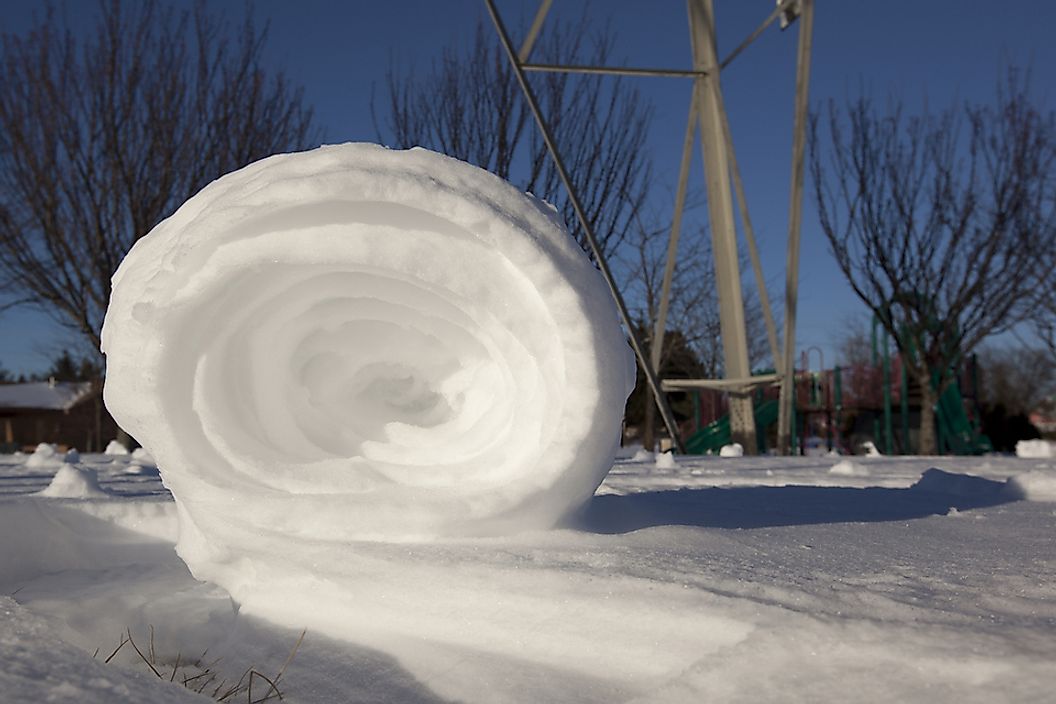What Is a Snow Roller?

Introduction
A snow roller is a climatic occurrence whereby snow appears to be sculpted into hollow cylindrical snow balls, often in the shapes of a Swiss roll or doughnut. These are primarily experienced in winter, especially in Northern Europe and North America, in US states such as Illinois and Ohio. Snow rollers occur in varying sizes, both small and large, depending on the smoothness of the snow surface and wind strength. Some snow rollers are light, while others remain icy enough such they can be moved without disintegrating. This phenomenon differs from man-made snow balls in snow rollers are cylindrical and hollow.
Conditions for Snow Roller Formation
A specific set of conditions are conducive for the formation of snow rollers. The most important of these conditions is presence of an upper layer of snow that is wet, sticky, and loose in nature. The presence of a layer of powdery snow underneath the sticky snow is also required. Wind is important, and must be strong enough to roll the snow, but not so strong that the snow roller is destroyed. Gravity also plays a role in the snow roller phenomenon, as snow on an incline only requires minimal wind for cylindrical snow rollers to form.
How Does the Snow Roller Phenomenon Occur?
The presence of snow is obviously essential for snow roller formation. Snow usually falls during cold winter periods, and is most common in temperate and polar regions. When snow is exposed to sunshine, its heats up almost to its melting point, thus forming a sticky upper layer of snow. When relatively strong winds blow over the snow, this causes the first roll of the snow roller. Subsequent waves of wind keep rolling the ball, and additional layers of snow are added. This leads to a gradual increase in the size of the snow roller, until the wind cannot roll it anymore and it comes to a stop. At this point the snow roller is usually in the shape of a doughnut or Swiss roll.
Snow Roller Effect
Due to this phenomenon, snow rollers are formed naturally with no human involvement. The presence and concentration of snow rollers is an important aspect of climate understanding by meteorologists. Snow rollers are also a source of amazement to the general public, which has led to research by scientists seeking to understand snow rollers. Snow rollers can however have a detrimental effect to humans, especially those interested in exploration activities during snowfall, as they can be potential causes of accidents when people unknowingly collide with them.











